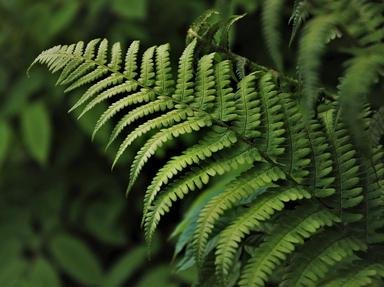Quiz Answer Key and Fun Facts
1. Yesterday you were explaining colors in an essay to your science teacher. You expounded for your science teacher, Mrs. Greene, that most plants appear green because chlorophyll (the principal pigment in plants)...
2. Tomorrow you will be collecting the gas given off from a plant in bright sunlight at a temperature of 27 degrees Celsius. The gas to be collected will probably be...
3. Pretend that in 300 years, science class with Mrs. Greene will consist of students becoming plants for an hour! These plant-students would have to gather the sun's energy with light-absorbing molecules called...
4. You're the smartest person in Mrs. Greene's class! Today you participated and accurately stated that the overall equation for photosynthesis is six molecules of ______ _______ plus six molecules of water (with the energy of light) produce one molecule of glucose and six molecules of oxygen.
5. Mrs. Greene asked you how the Calvin cycle differs from light-dependent reactions. What could you say?
6. You thought you had memorized what happened during the reactions of photosynthesis, but Mrs. Greene took off one point from your homework, saying that "Not all of these are steps in the light-dependent reactions". Which is NOT a step in the light-dependent reactions?
7. In 300 years, students not only will turn into plants for an hour, but will be able to conduct experiments on other planets! The newly discovered planet Q will be identical to Earth, except for the complete absence of carbon dioxide. (Minor detail, right?) But if carbon dioxide is completely removed from a plant's environment, what would you expect to happen to the plant's production of high-energy sugars?
8. Mrs. Greene tells you that a chloroplast (a photosynthetic organelle) contains stroma (where the Calvin cycle or light-independent reactions take place). A thylakoid (saclike photosynthetic membrane) contains chlorophyll (a plant's principal pigment). A granum (stack of thylakoids) contains several thylakoids. But wait- is the stroma the space outside the thylakoid membranes?
9. Mrs. Greene required that every student place a plant in a heated oven as a homework assignment. What would you expect to happen to most plants at temperatures greater than 45 degrees Celsius?
10. Suppose, as a long term project, you are trying to recreate your favorite scientist's experiment. You light a candle and watch the flame gradually go out when you put a glass jar over it. Then you place a live sprig of mint under the jar and notice that the candle flame burns longer. Whose experiment did you recreate?
Source: Author
luvtheheaven
This quiz was reviewed by FunTrivia editor
crisw before going online.
Any errors found in FunTrivia content are routinely corrected through our feedback system.

